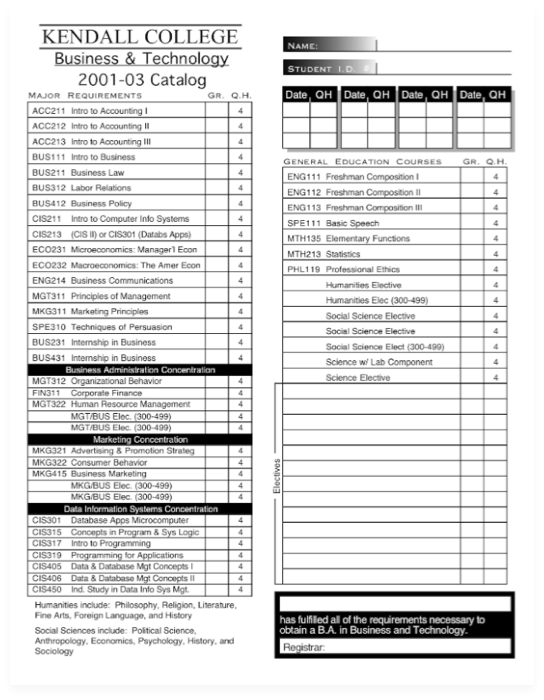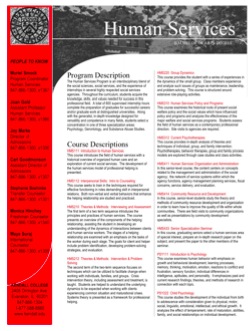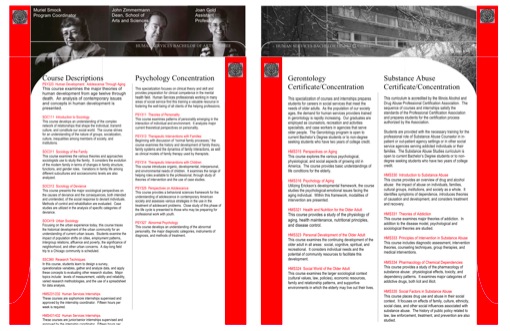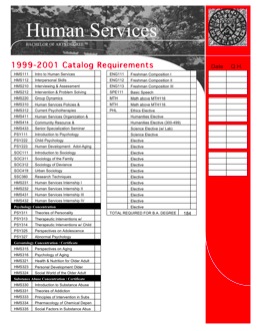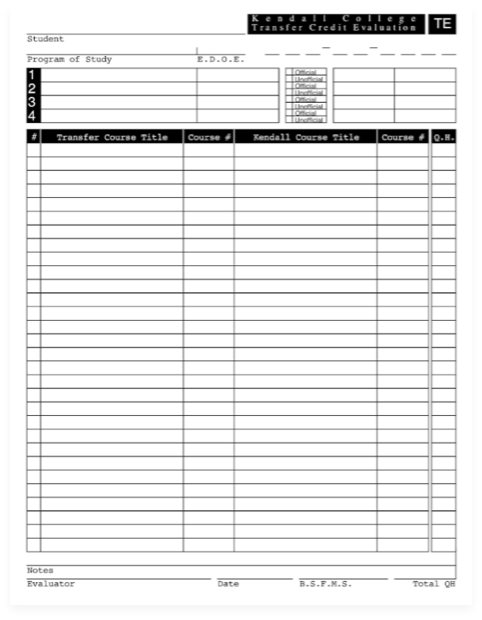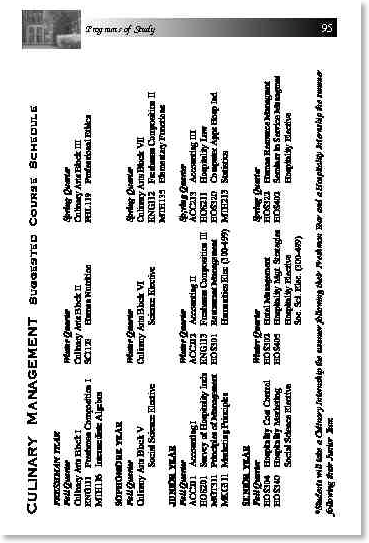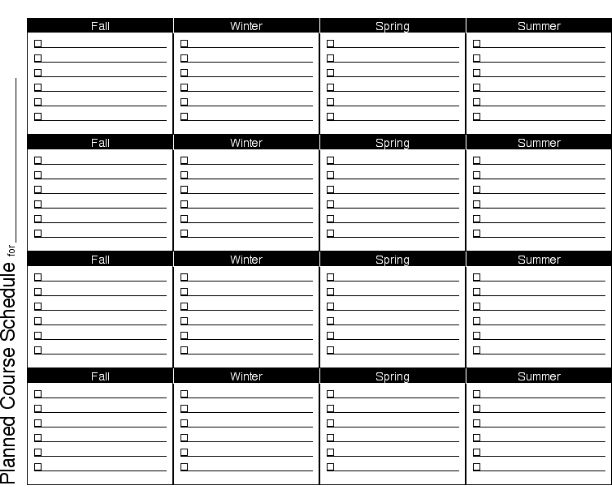
Academic Affairs (Case Study)
I arrived at Kendall College in Fall 1997 as a part of a new 2-person team in the Office of the Registrar. We replaced a 3-person team that had recently completed the unenviable task of moving from paper records to a computerized student information system. We felt fortunate to walk into an office where the record-keeping was so immaculate, but we had a great deal of work to do in the areas of communication and customer service.
At the time, students and faculty advisors in most departments were having a difficult time ensuring that students were working successfully toward meeting graduation requirements. Written academic policies and degree requirements were often confusing or out-of-date, and existing degree audit forms created more confusion than guidance.
My first priority, with the backing of the Registrar, was to transform the office into one that:
The following are the steps that I took to transform the office.
At the time, students and faculty advisors in most departments were having a difficult time ensuring that students were working successfully toward meeting graduation requirements. Written academic policies and degree requirements were often confusing or out-of-date, and existing degree audit forms created more confusion than guidance.
My first priority, with the backing of the Registrar, was to transform the office into one that:
- Utilized proactive communication to prevent problems rather than waiting to solve problems.
- Empowered students and their advisors to clearly track a student's progress toward graduation and to plan accordingly.
- Provided transparency in all decisions, policies, and procedures.
- Welcomed any student, faculty member, or staff member to visit or to call to ask questions or to seek advice.
- Worked collaboratively with other departments to provide students with the best overall college experience possible.
The following are the steps that I took to transform the office.
.
STEP 1 - CREATE USER-FRIENDLY DEGREE AUDIT FORMS AND RE-AUDIT ALL CURRENT STUDENTS
Existing degree audit forms were unintuitive and created problems for many students who would receive their final graduation audits only to discover that they were lacking requirements that they did not realize existed. Creating straight-forward and simple-to-use audit forms that provided an accurate picture of the path to graduation was the critical first step in empowering students and their advisors. The process of creating these forms helped to clarify many of the inconsistencies between the college catalog, existing audit forms, and current practice.
After creating the new forms and confirming their accuracy in meetings with department chairs and division directors, I personally re-audited Kendall's 400+ students from scratch.
This included re-evaluating transfer credit for the majority of our students. I took advantage of this opportunity to make the transfer credit evaluation process more transparent. Rather than recording transfer credit as a lump sum and marking specific requirements as "waived", as had been done in the past, I created a Transfer Key form that I used during transfer evaluations to clearly show which courses were being utilized to fill which requirements.
Existing degree audit forms were unintuitive and created problems for many students who would receive their final graduation audits only to discover that they were lacking requirements that they did not realize existed. Creating straight-forward and simple-to-use audit forms that provided an accurate picture of the path to graduation was the critical first step in empowering students and their advisors. The process of creating these forms helped to clarify many of the inconsistencies between the college catalog, existing audit forms, and current practice.
After creating the new forms and confirming their accuracy in meetings with department chairs and division directors, I personally re-audited Kendall's 400+ students from scratch.
This included re-evaluating transfer credit for the majority of our students. I took advantage of this opportunity to make the transfer credit evaluation process more transparent. Rather than recording transfer credit as a lump sum and marking specific requirements as "waived", as had been done in the past, I created a Transfer Key form that I used during transfer evaluations to clearly show which courses were being utilized to fill which requirements.
.
STEP 2 - ADVISING SESSIONS FOR CURRENT STUDENTS
Prior to the next registration period, I worked with our faculty and division directors to separate students into two groups:
Students in the latter group (approximately 2/3 of our students) were officially assigned to me as their academic advisor on a temporary basis. The other students retained their original advisor. I mailed copies of the updated audit forms to each student and to their faculty advisors. Students who were now assigned to me were required to hold an advising session with me - the first such session for many students. Students who did have existing relationships with their faculty advisors were asked to meet with me prior to meeting with their advisors.
During these sessions, I helped students to understand their audits and helped them to determine if they were on target toward their anticipated graduation date.
Prior to the next registration period, I worked with our faculty and division directors to separate students into two groups:
- Those who had existing advisor/advisee relationships with faculty who were comfortable advising
- Those who had not been assigned an advisor, had not met with their assigned advisor, or were assigned to an advisor who was not comfortable advising
Students in the latter group (approximately 2/3 of our students) were officially assigned to me as their academic advisor on a temporary basis. The other students retained their original advisor. I mailed copies of the updated audit forms to each student and to their faculty advisors. Students who were now assigned to me were required to hold an advising session with me - the first such session for many students. Students who did have existing relationships with their faculty advisors were asked to meet with me prior to meeting with their advisors.
During these sessions, I helped students to understand their audits and helped them to determine if they were on target toward their anticipated graduation date.
.
STEP 3 - CREATING ADDITIONAL ADVISING TOOLS
While a large percentage of Kendall College students were transfer students or part-time students, I felt that it was important that each program determine a "Suggested Course Schedule" demonstrating what the program would look like for an incoming Freshman. I worked with department chairs to develop a Suggested Course Schedule for each program. These served two primary functions:
In addition to Suggested Course Schedules, I also created blank Planned Course Schedule forms that students and their advisors could use to create planned schedules.
While a large percentage of Kendall College students were transfer students or part-time students, I felt that it was important that each program determine a "Suggested Course Schedule" demonstrating what the program would look like for an incoming Freshman. I worked with department chairs to develop a Suggested Course Schedule for each program. These served two primary functions:
- To give incoming students a clear visualization of what their work load will look like and when they are likely to see each class.
- To assist program chairs with scheduling courses that, in a small school, may only be offered once a year.
In addition to Suggested Course Schedules, I also created blank Planned Course Schedule forms that students and their advisors could use to create planned schedules.
.
STEP 4 - RETHINKING THE ROLE OF ADVISING DURING THE ADMISSIONS PROCESS
With the knowledge that our current students were all on track, I turned to the Admissions Office to determine ways that my office might be able to better serve their office and the prospective students with which they were working. The Admissions staff was eager to have a new ally to help them ensure that their students would have the best admission process possible and would start their Kendall careers off on the right foot. Some of the projects that we embarked on were:
With the knowledge that our current students were all on track, I turned to the Admissions Office to determine ways that my office might be able to better serve their office and the prospective students with which they were working. The Admissions staff was eager to have a new ally to help them ensure that their students would have the best admission process possible and would start their Kendall careers off on the right foot. Some of the projects that we embarked on were:
- For transfer students, replacing admission counselor-created unofficial transcript evaluations with official evaluations performed by me and translated onto audit forms for the program or programs in which the prospective student was interested.
- Adding me as a stop on all campus visits to review with prospective students the requirements for the degree in which they were interested and to look over the Suggested Course Schedule to explain the flow of the program.
- Adding an advising and registration component to summer Open House days for those students with complete files who were ready to commit.
- Connecting students with an assigned faculty advisor prior to the start of their first semester.
.
STEP 5 - TRAINING FACULTY ADVISORS / WRITING ADVISING HANDBOOK
Our goal was to create an academic advising system in which each student had an academic advisor who was a faculty member with expertise in the student's desired career area. In addition to having a knowledge of the student's career area, the faculty member also needed to minimally gain a working knowledge of the academic major program(s) in which his or her advisees would be enrolled, general education degree requirements, and academic policies and procedures. I worked with faculty as a full group, in small groups, and individually until all of our full-time faculty and permanent part-time faculty were actively serving as advisors.
In an effort to bring our advising program to the next level, I created the college's first Academic Advising Handbook and held or coordinated further optional trainings related to the handbook's components - most notably in the area of referral to various student services.
Our goal was to create an academic advising system in which each student had an academic advisor who was a faculty member with expertise in the student's desired career area. In addition to having a knowledge of the student's career area, the faculty member also needed to minimally gain a working knowledge of the academic major program(s) in which his or her advisees would be enrolled, general education degree requirements, and academic policies and procedures. I worked with faculty as a full group, in small groups, and individually until all of our full-time faculty and permanent part-time faculty were actively serving as advisors.
In an effort to bring our advising program to the next level, I created the college's first Academic Advising Handbook and held or coordinated further optional trainings related to the handbook's components - most notably in the area of referral to various student services.
”When John arrived, the Registrar's Office was in need of a customer service over haul... For new students it is especially important that the beginning of their college experience get off to a positive start. Making students feel that they are in capable hands is a talent of John's. It comes naturally for him since he truly wants what is in the student's best personal and academic interest... John is a wonderful advocate to have at any college for the student body.”
Amy B.
Former Dean of Admissions
Kendall College
Program Cards
Sent by Admissions to prospective students who expressed interest in one or more possible majors. Each program card included the course descriptions and audit form for one program of study. Admissions counselors felt that these cards offered a clear and meaningful overview of each program's course of study, allowing students to make informed decisions.
